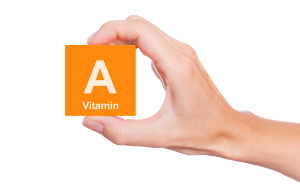Omega-6
Omega-6 fatty acids belong to a group of polyunsaturated fatty acids whose "omega-6" name indicates that they have a double bond at the sixth carbon atom in the middle carbon chain. Omega-6 fatty acids provide energy and they are constituents of cell membranes and numerous biochemical processes. The type called LA (linoleic acid) is essential, as we humans are unable to synthesise it in the body. We depend on LA from our diets. Helped by certain enzymes, LA gets converted to GLA (gamma-linolenic acid) and further on to AA (arachidonic acid) and some hormone-like substances called prostaglandins (type E1 and E2). The omega-6 fatty acids work together in a biochemical teamwork with omega-3 fatty acids. The type of fatty acids and the mutual balance between them is important for various processes.
Functions and importance for
- Construction of cell membranes
- Maintenance of soft and pliable skin and other tissues
- Inflammatory processes
- Basis for hormone-like substances (prostaglandins)
- Cholesterol levels
- Cramps
- Cardiovascular system
Deficiencies and poor utilisation may be caused by
Low-fat diets - especially without unspoiled vegetable sources
- Deep-frying and frying
- Hydrogenation (industrial hardening)
- Oxygen and light
- Lack of omega-3
Deficiency symptoms
Lack of the essential fatty acids omega-6 and omega-3 may result in an array of health problems and symptoms. It is also largely dependent on the mutual balance between the two types of fatty acids and the quality of the food that is consumed.
Sources
LA (linoleic acid): Most plant oils such as safflower oil, sunflower oil, corn oil, wheat germ oil, and soy oil.
GLA (gamma-linolenic acid): Borage, evening primrose, oats, black currants, breast milk.
AA (arachidonic acid): Meat, fish, liver and other types of organ meat, dairy products.
Linoleic acid content in grams per 100 grams
| Safflower oil | 74 |
| Grape seed oil | 67 |
| Corn oil | 55 |
| Margarine (soft) | 41 |
| Rapeseed oil | 22 |
Recommended daily allowance (RDA)
May vary from country to country.
Overdosing - side effects
Scientific research suggests that consumption of too much omega-6 in relation to omega-3 may increase the risk of:
- Chronic inflammation
- Poor circulation
- Cramps and menstrual pain
- Depression
- Several other diseases
Trans fatty acids
Trans fatty acids are toxic molecules that occur in industrial hardening/processing of vegetable oils with omega-6 and other types of polyunsaturated fatty acids. Trans fatty acids are rightfully suspected of increasing the risk of cardiovascular disease and diabetes. Margarine, cookies, cakes, French fries, powder sauce mix, caramels, and popcorn (for microwave popping) are typical sources of trans fatty acids. Although a new threshold level of 2% has been established (in Denmark), this level is often exceeded according to a report from the Technical University of Denmark (DTU). This is mainly seen with imported raw materials and foods.
Important information
Some of the main reasons why most of us get too much omega-6 and too little omega-3 is are the high omega-6 content in animal feed, altered dietary habits with lower fish consumption, ready meals, margarine, and deep-fried foods. Western diets often contain omega-6 and omega-3 in a 10:1 ratio, and in some cases it goes up to a 30:1 ratio. The optimal ratio is believed to be 4:1 or lower.
- Created on .












 "After about one week of taking the Q10 supplement I could feel a huge difference," says 23-year old Alan Piccini, who has been suffering from extreme fatigue and muscle aches ever since he was a child.
"After about one week of taking the Q10 supplement I could feel a huge difference," says 23-year old Alan Piccini, who has been suffering from extreme fatigue and muscle aches ever since he was a child. “Taking capsules with co-enzyme Q10 has freed me of the severe side effects of my cholesterol lowering medicine,” Mrs Franken explains.
“Taking capsules with co-enzyme Q10 has freed me of the severe side effects of my cholesterol lowering medicine,” Mrs Franken explains.